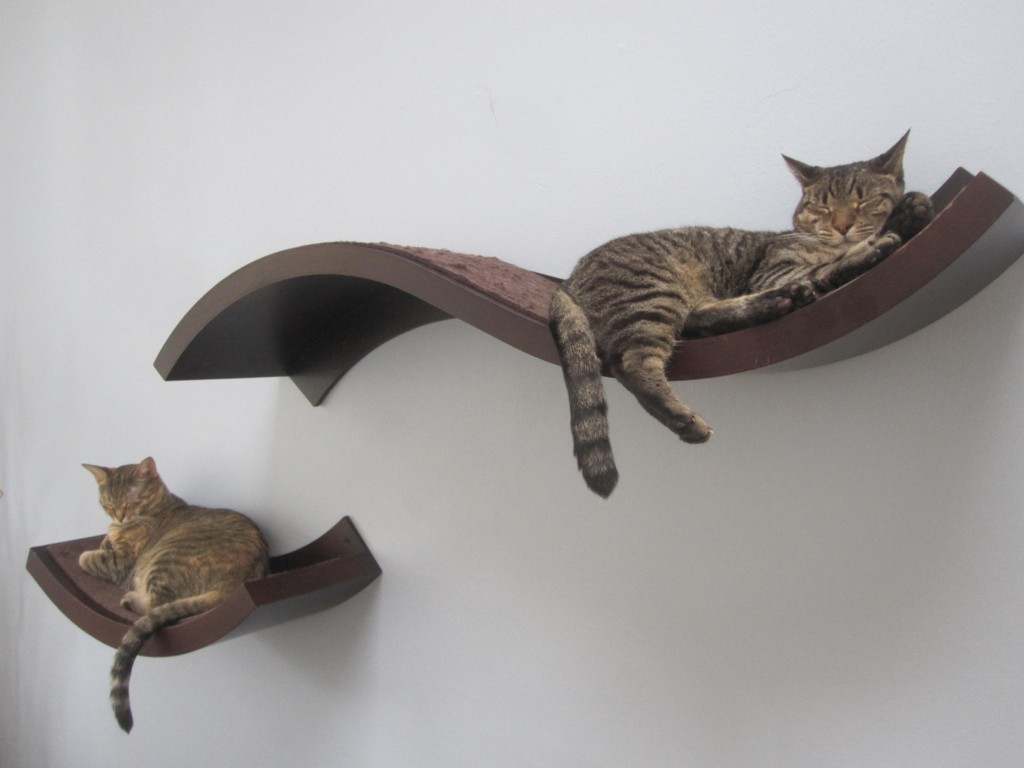
Get your cats checked by your vet
When behaviour starts to change the first thing that we would recommend is to get both cats checked over by a vet to rule out anything medical. Cats can show aggression when in pain and this can manifest onto us or other pets in the home. If one or both cats are spraying, this is a sign of extreme stress, it’s their way of saying “Hey, things aren’t right in my world” and “This is my territory, go away.”
Give them space and their own resources
You need to be able to provide each cat enough resources so that they do not have to be in the same room if they do not wish to be. The general rule of thumb is one litter tray per cat and one extra. Make sure that they are in different areas of the home so that they do not need to travel past one another or go into the others “territory” to get to one.
The same applies to water, food, scratch posts, toys and sleeping areas. The less conflict over resources there are, the happier that they’ll be. Make sure that your litter trays are located in quiet areas of the home. Do not place them in hallways or other high traffic areas. Bathrooms are also not a good idea unless the door is never closed. Hallways tend to be “high conflict areas” within a home because they are narrow and confined. Cats are forced to pass each other closely when they may otherwise chose not to.
Stress in cats
Watch your cats for signs of cystitis as this is a common stress related problem – especially if your cat chooses to hold itself rather than pass your other cat to get to a litter tray. Other signs that either of them are not coping with their stress levels are urine spraying, inappropriate urination, excessively scratching surfaces, over grooming (you will notice this on the stomach and hind legs), sleeping more and eating more or less than usual.
Feeding your cats
When you feed your cats, continue to feed in different rooms, but do not place their bowls at the edge of the room. Place the bowl in such a way that your cat can choose where to sit to eat. Many cats will chose to sit with their bottom towards the wall so that they are facing into the room. This way, they can watch what is going on around them and are then more confident that they can get away quickly if they need to. The same applies for water bowls, but they should be placed away from the food bowls.
Play with your cats
Play time should be done separately with the other cat in a different room. They are more likely to play whilst not feeling threatened by another cat and playtime is important as it may help your cat to feel happier as endorphins can be released during play.
Give them a high place to escape
Make sure that they have lots of places to get up high, at least one in each room– cats feel much happier up high as they can see what is going on around them without placing themselves in the path of conflict, and can move out of the way quickly if conflict comes to them as they can see it coming. If they cannot get on top of your wardrobe for example, clear some space for them and put something next to it so they can climb up and put a comfy bed or blanket up there. Shelving in rooms where there are no high places can work wonders.
Pheromone products
Feliway and other cat calming pheromone products can help too, however make sure that you have enough to cover your entire home. One diffuser will cover 50-70m2.
If you try all of the above and the problem persists see your vet who may be able to recommend a cat behaviourist.
